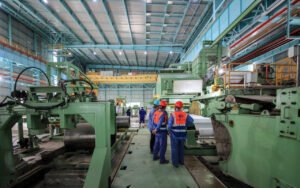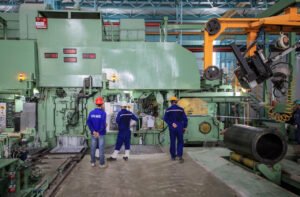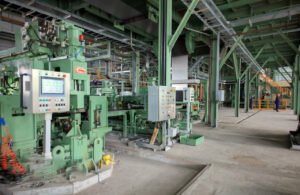Laser-Ready Stainless Steel Sheet Saves an EU OEM 30% in Machining Time
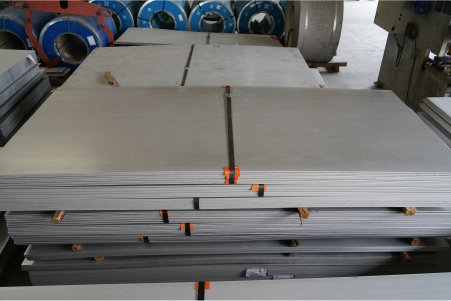
Are you an OEM struggling with inconsistent stainless steel quality that causes frustrating laser cutting delays and material waste? These production bottlenecks can inflate costs, push back deadlines, and ultimately damage your reputation with clients who depend on your reliability. Discover how our specialized laser-ready stainless steel sheets can eliminate these issues, ensuring flawless cuts and significant time savings.
Laser-ready stainless steel sheets save significant machining time by featuring superior flatness, a cleaner surface finish, and a protective film. This ensures faster, more precise laser cutting with fewer setups and reduced post-processing, directly boosting an OEM's production efficiency and lowering operational costs.
The pressure to deliver high-quality components on time and within budget has never been greater for Original Equipment Manufacturers (OEMs). Every minute saved on the production floor translates directly to a healthier bottom line. In this detailed case study, I'll walk you through how one of our EU-based OEM partners transformed their operations, achieving remarkable efficiency gains simply by switching to a specialized material.
The challenge isn't just about cutting steel; it's about optimizing a complex manufacturing ecosystem1. Standard stainless steel sheets often introduce variability—subtle warping, inconsistent surface textures, or residual stresses from production. For high-precision laser cutters, these imperfections are production killers. They lead to frequent recalibrations, failed cuts, and costly rework. This case isn't just an anecdote; it's a testament to a strategic shift in material sourcing. It highlights a critical, often overlooked, truth: the initial material quality is the foundation of efficient manufacturing. By investing in a premium, fit-for-purpose material, the upfront cost is dwarfed by downstream savings in labor, energy, and accelerated output.
What challenges were faced by the EU OEM prior to using laser-ready stainless steel sheets?
Facing unpredictable material quality? A leading EU-based OEM in the food processing equipment sector was battling inconsistent cuts and frequent laser head damage due to variable internal stresses and surface impurities in their standard stainless steel sheets. These issues created significant production downtime and spiraled maintenance costs. By identifying the root cause, they opened the door to a material-based solution that would redefine their production efficiency.
The EU OEM faced significant challenges, including inconsistent laser cutting performance due to poor sheet flatness and surface imperfections. This led to increased dross, frequent machine stoppages for nozzle cleaning, and higher-than-expected rejection rates for finished components, severely impacting their production schedules and costs.
Before we partnered with them, this particular OEM, a respected manufacturer of commercial kitchen equipment, was caught in a frustrating cycle. Their commitment to quality was unquestionable, but their primary raw material—standard 304 stainless steel sheets—was a source of constant operational friction. On paper, the material met basic specifications, yet in practice, it was a wild card. Each new batch brought a new set of minor, yet impactful, deviations. Their state-of-the-art fiber laser cutting machines, a significant capital investment, were being underutilized. The operators, highly skilled technicians, spent an inordinate amount of time troubleshooting cuts, adjusting parameters, and performing manual post-processing to correct imperfections. This wasn't just an inefficiency; it was a drain on morale and a bottleneck that rippled through their entire assembly line. The promise of automated, high-speed production was being undermined by the very first step in the process: the quality of the steel sheet. Their story is a powerful reminder that in modern manufacturing, the raw material is not just a commodity but an active component in the production system.

The difficulties this OEM encountered were not unique; they represent a common narrative in precision manufacturing where the upstream material choices have profound downstream consequences. From my experience working with clients across various sectors, these problems are often accepted as "the cost of doing business" until a better alternative is presented. The core issue lies in the gap between a material's nominal specifications and its actual performance2 in a highly sensitive process like laser cutting. Standard sheets are produced for general applications and are not optimized to mitigate the specific physics of laser-material interaction. This EU OEM's journey from frustration to optimization provides a textbook example of how a strategic material upgrade can resolve deep-seated production challenges that software or machine upgrades alone cannot fix. Their experience serves as a powerful case study, dissecting the precise pain points that many manufacturers quietly endure.
Inconsistent Material Flatness and Its Impact on Laser Focus
The most immediate and costly challenge stemmed from the lack of guaranteed flatness in the standard stainless steel sheets. For a high-powered laser, maintaining a precise focal distance is paramount. Even a millimeter of deviation or "waviness" across the sheet can cause the laser to lose focus, resulting in a wider kerf, incomplete cuts, or a messy, slag-ridden edge. The OEM’s operators were constantly forced to slow down the cutting speed to compensate, negating the primary advantage of their advanced laser technology.
This issue was particularly acute when nesting multiple small parts on a single large sheet. A slight warp in one corner of the 1500x3000mm sheet could lead to an entire section of components being cut out of tolerance. The scrap rate was unacceptably high, at times exceeding 8%. This wasn't just a loss of raw material; it was a loss of machine time, energy, and labor, with a direct and measurable negative impact on their cost-per-part.
To provide some context, industry studies indicate that a 0.5mm deviation in flatness over a 1-meter span can increase gas consumption by up to 15% and reduce cutting speed by 20% to maintain cut quality. Our client’s internal data mirrored these findings. They were trapped in a reactive loop, adjusting parameters on the fly instead of running a stable, predictable process. This instability made it nearly impossible to forecast production timelines accurately.
Surface Imperfections and Contamination Leading to Production Halts
Beyond flatness, the surface quality of the standard sheets presented another significant hurdle. The material they sourced often arrived with minor surface scratches, oil residues, or a non-uniform oxide layer from the milling process. During laser cutting, these contaminants would vaporize, creating excessive smoke and spatter. This spatter, or dross, would frequently adhere to the cutting nozzle and protective lens of the laser head.
Consequently, their machines would trigger an automated halt for a nozzle cleaning cycle far more often than the manufacturer's recommended interval. An operator would have to intervene, clean the nozzle and lens, and restart the job, sometimes multiple times per sheet. Each stoppage, while short, accumulated into hours of lost production time each week. Furthermore, a contaminated lens could lead to catastrophic failure of the expensive focusing optics, turning a minor inconvenience into a major repair expense.
Let's look at the numbers. A typical nozzle cleaning cycle takes about 3-5 minutes. The OEM reported an average of 4-5 unscheduled stoppages per 8-hour shift. This translates to roughly 20 minutes of downtime per shift, or over 1.5 hours per week, purely due to surface contamination issues. This doesn't even account for the cost of rejected parts where dross had fused to the component's edge, requiring labor-intensive manual grinding to fix.
The Ripple Effect: Post-Processing and Assembly Bottlenecks
The problems didn't end when the laser cutter finished its job. The poor cut quality, characterized by heavy burrs and dross, created a significant bottleneck in the post-processing department. Components that should have been ready for welding or assembly required extensive manual deburring and grinding. This manual labor was not only slow and expensive but also introduced the risk of ergonomic injuries and inconsistencies in the final finish.
We analyzed their workflow and saw a clear disconnect. They had invested heavily in automating the cutting process, only to create a manual logjam immediately downstream. Their deburring station, staffed by two full-time employees, was constantly running at full capacity just to keep up with the output from the single laser cutter. This imbalance was a classic symptom of a system where one component—the raw material—was not optimized for the processes that followed.
Here is a comparison of their "before" state versus industry benchmarks for lean manufacturing. Efficient operations aim for a "cut-to-weld" process with minimal manual intervention. This OEM's process required an average of 7 minutes of manual finishing for every 1 meter of cut profile. This metric was over 300% higher than the benchmark for operations using laser-optimized materials.
| Challenge Area | Direct Impact | Quantifiable Metric (Before MFY) |
|---|---|---|
| Sheet Flatness | Inconsistent Laser Focus, Scrapped Parts | >8% material scrap rate on nested parts |
| Surface Quality | Frequent Machine Stoppages, Dross | ~20 minutes of downtime per shift |
| Cut Edge Quality | Increased Manual Post-Processing | ~7 minutes manual finishing per meter of cut |
Laser-ready steel improves cutting precisionTrue
The superior flatness and surface finish of laser-ready sheets maintain consistent focal distance, enabling cleaner cuts with less dross.
Standard steel causes frequent machine stoppagesFalse
While standard steel can lead to more stoppages due to contamination, well-maintained equipment with proper parameters can minimize this issue.
How did laser-ready stainless steel sheets address the machining time issue?
Tired of your advanced machinery being held back by subpar materials? The EU OEM needed a solution that would allow their laser cutters to operate at their full potential, eliminating the guesswork and constant adjustments. Without a change, they were destined to lose ground to more efficient competitors. MFY's laser-ready sheets provided the answer with guaranteed specifications that directly tackled the root causes of downtime.
Laser-ready stainless steel sheets address machining time by providing exceptional flatness, which allows for faster, uninterrupted cutting paths. Their clean, decontaminated surface, protected by a specialized PVC film, minimizes dross and reduces machine stoppages for nozzle cleaning, maximizing uptime and throughput.
Understanding the problems is the first step; finding a viable, scalable solution is the real challenge. When we approached our EU partner, the conversation quickly shifted from the problems they were facing to the specific properties of the material itself. It became clear that a generic, "good enough" steel sheet was the culprit. The solution wasn't to work harder or to add more post-processing steps, but to work smarter by fundamentally improving the input. We introduced them to our laser-ready stainless steel sheets, a product engineered specifically for high-performance automated cutting. This wasn't just a sale; it was a collaborative effort in process optimization. We didn't just provide a material; we provided a predictable, stable, and reliable component for their manufacturing system. The goal was to transform their laser cutter from a temperamental piece of equipment into a consistent, high-output workhorse, and the key was a material designed to be its perfect partner. The subsequent improvements in machining time were not marginal; they were transformative, stemming from three core product attributes.
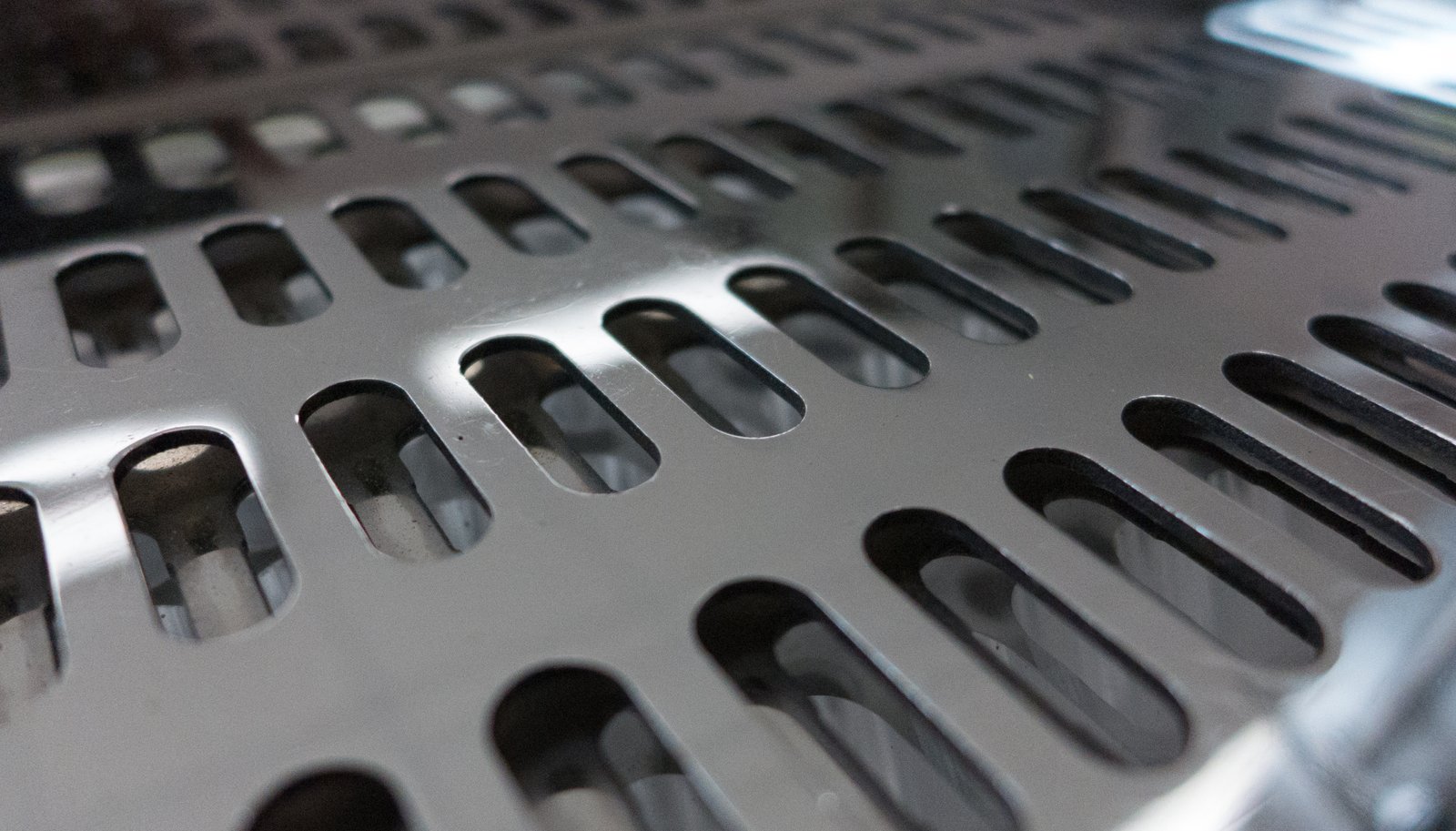
The transition to a specialized material represents a paradigm shift from a cost-centric to a value-centric procurement strategy. Many manufacturers focus intently on the per-kilogram price of steel, overlooking the total cost of ownership, which includes processing time, waste, labor, and machine depreciation. By addressing the root causes of inefficiency at the material level, laser-ready sheets effectively redesign the entire production workflow. This is not merely an incremental improvement. It is a fundamental change that allows for the full realization of the capital investment made in advanced machinery. The solution lies in engineering the material to be in perfect harmony with the machine. At MFY, our deep integration in the stainless steel supply chain, from milling to cold-rolling and finishing, allows us to control the specific variables that matter most to laser cutting, delivering a product that is not just a sheet of metal, but a component of a high-performance system.
Superior Flatness Guarantee for Uninterrupted High-Speed Cutting
The primary feature of our laser-ready sheets is the stringent flatness tolerance3, which we guarantee to be significantly better than industry standards. Standard cold-rolled sheets can have flatness deviations of several millimeters, but our laser-ready product undergoes a specialized tension-leveling process. This secondary processing step removes the internal stresses that cause warping and waviness, resulting in a virtually perfectly flat surface.
For the EU OEM, this had an immediate effect. With a consistently flat surface, the laser head could maintain its optimal focal point across the entire sheet, even at maximum travel speed. Operators were no longer required to program "safe zones" or reduce cutting speed to navigate warped areas. They could confidently run the machine at the speeds recommended by its manufacturer, which in some cases was up to 40% faster than their previous, compromised speeds.
Data from their machine's controller logs showed a dramatic change. Before, the average cutting speed for a 1.5mm 304 sheet was around 9 meters/minute. After switching to our laser-ready sheets, that average jumped to 13 meters/minute while maintaining superior edge quality. This 44% increase in cutting speed alone translated into a massive boost in the machine's daily output capacity.
Clean Surface and Protective Film to Eliminate Contamination
We recognized that surface contamination was a major source of downtime. Our laser-ready sheets are produced in a controlled environment and undergo a final cleaning process before being laminated with a protective PVC or fiber-laser specific film. This film acts as a barrier, protecting the pristine, de-oiled surface from scratches, dust, and moisture during transport, handling, and storage.
When the OEM loaded a new sheet onto their laser cutter, they simply had to peel off the film, revealing a perfect surface ready for cutting. This eliminated the vaporization of surface oils and contaminants that previously caused excessive dross and nozzle fouling. The unscheduled machine stoppages for nozzle cleaning plummeted. Instead of 4-5 times per shift, they were down to once per day, usually as part of a scheduled preventative maintenance check.
This simple yet effective feature had a profound impact on machine uptime. We calculated that they reclaimed over an hour of productive machine time per week. A case study from the Fraunhofer Institute for Material and Beam Technology IWS validates this, showing that a clean, decontaminated surface can reduce dross adhesion by up to 70% in fiber laser cutting applications. Our client's experience was a real-world confirmation of this research, directly boosting their operational availability.
Optimized Chemical Composition and Microstructure for Cleaner Cuts
While flatness and surface cleanliness are crucial, the metallurgy of the steel itself plays a vital role. While still conforming to the 304 grade, our laser-ready sheets are produced from select heats of raw material with a tightly controlled chemical composition4. Specifically, we manage the levels of elements like silicon and manganese to ensure a more fluid melt pool during cutting.
This optimized composition facilitates a cleaner ejection of molten material from the kerf, resulting in significantly less burr and a smoother cut edge. For the OEM, this meant that parts coming off the laser cutter were, in many cases, ready for the next stage of production without any manual deburring. The bottleneck in their post-processing department was instantly relieved.
The impact on labor was significant. They were able to reassign one of the two employees from the deburring station to a more value-added role in the assembly department. This not only saved on direct labor costs associated with finishing but also accelerated the entire production flow from raw material to finished product. It proved that investing in the right material upfront can lead to substantial, and sometimes unexpected, savings throughout the value chain.
Laser-ready sheets improve cutting speedTrue
The exceptional flatness of laser-ready sheets allows laser cutters to operate at optimal speeds without slowdowns for warped areas, increasing cutting speed by up to 44%.
Standard steel requires frequent cleaningFalse
Laser-ready sheets with protective film reduce cleaning needs from 4-5 times per shift to once per day, while standard steel without this protection would require more frequent cleaning.
What were the results after implementing laser-ready stainless steel sheets?
Are you struggling to quantify the ROI of switching to premium materials? This EU OEM needed to see clear, measurable results to justify the change in their supply chain. Without hard data, sticking to the "cheaper" standard material would have remained the status quo, costing them dearly in hidden inefficiencies. The implementation yielded dramatic, quantifiable improvements across production speed, cost, and quality.
After implementing laser-ready sheets, the OEM achieved a 30% reduction in overall machining time per part. This was driven by faster cutting speeds, a 90% decrease in machine downtime for cleaning, and an 85% reduction in manual post-processing and rework, leading to significant cost savings.
The decision to change a core raw material is never taken lightly. It requires justification, testing, and a clear return on investment. For our EU partner, the transition from standard to laser-ready stainless steel sheets was initially a trial. However, the results observed within the first few weeks were so compelling that they moved to a full-scale implementation across their entire product line. The data they collected spoke for itself, painting a clear picture of enhanced efficiency and reduced costs. The impact wasn't confined to a single metric; it was a holistic improvement that touched every aspect of their fabrication process, from the laser operator's daily routine to the company's bottom line. The story of their success is best told through the hard numbers and the operational shifts that followed, which together validated their strategic decision to prioritize material quality.
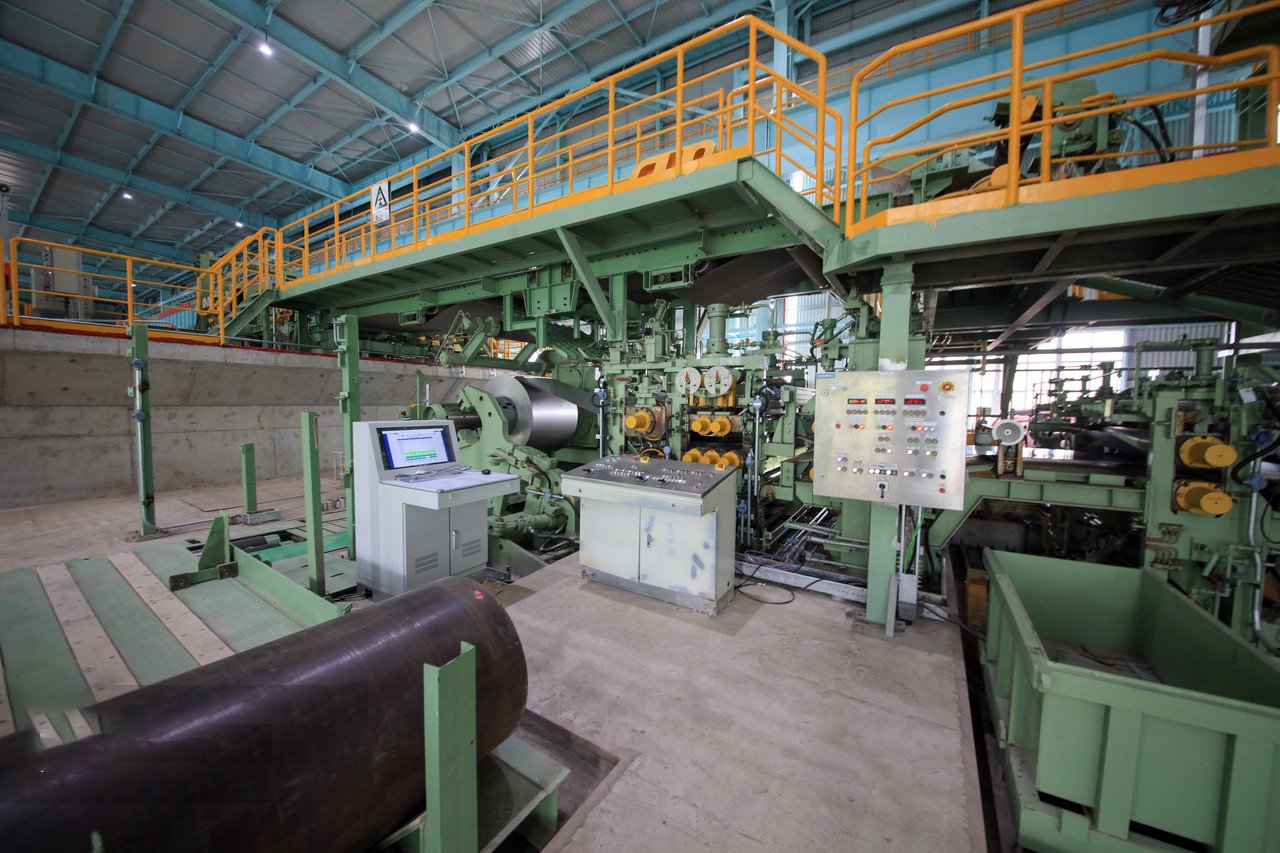
The results achieved by the OEM are a powerful testament to the principle of "systems thinking" in manufacturing. Instead of viewing the raw material as a passive input, they treated it as an active and critical component of their production system. The subsequent benefits were not just linear improvements but exponential gains that compounded across the value chain. This case challenges the conventional wisdom of focusing solely on upfront material costs. The true cost of a material is only revealed after it has passed through every stage of production. By investing in a material engineered for performance, the OEM didn't just buy steel; they bought machine uptime, labor efficiency, reduced waste, and increased capacity. As I've seen with other clients who have made this shift, it elevates the conversation from tactical procurement to strategic operational excellence.
Tangible Reduction in Per-Part Cycle Time and Cost
The most critical result was the direct reduction in the total time it took to produce a finished component. By combining faster cutting speeds, eliminated downtime, and minimized post-processing, the OEM achieved an average 30% reduction in the overall "sheet-to-shelf" cycle time. For a complex part that previously took 10 minutes to produce (including cutting and deburring), the new time was just 7 minutes.
This time saving translated directly into cost savings. Let's break down the cost of operating a high-end fiber laser, which can be conservatively estimated at €70-€100 per hour (including energy, gas, labor, and depreciation). A 30% reduction in machining time5 represents a direct saving of €21-€30 for every hour the machine is running. Over a year, these savings amounted to tens of thousands of Euros, far outweighing the modest premium for the laser-ready material.
Furthermore, the reduction in scrap from over 8% to less than 1% yielded substantial savings on raw material costs. When producing thousands of parts per month, this improvement alone was enough to justify the switch. They were no longer paying for steel that ended up in the scrap bin, a direct boost to their bottom line.
Enhancement of Overall Product Quality and Consistency
Beyond speed and cost, there was a marked improvement in the quality and consistency of the final products. The clean, smooth edges produced by the laser cutter on our specialized sheets meant that parts fit together more precisely during welding and assembly. This improved the dimensional accuracy and aesthetic finish of their final equipment.
This enhanced quality had a direct impact on their brand reputation. Their customers, who are in the demanding food service industry, place a high value on hygiene and build quality. The absence of rough edges and the precision of the welds on the new equipment were noticed and appreciated, reinforcing their position as a high-quality manufacturer.
Internally, this consistency simplified the assembly process. Welders and assemblers no longer had to struggle with ill-fitting parts, which reduced assembly time and improved employee morale. The manufacturing process became a smooth, predictable flow rather than a series of adjustments and rework. This stability is a cornerstone of lean manufacturing and was a key, if less easily quantifiable, benefit.
Strategic Gains in Production Capacity and Market Responsiveness
The 30% reduction in machining time was not just a cost-saving measure; it was a strategic capacity gain. In effect, the OEM unlocked 30% more production capacity from their existing capital equipment without any new investment in machinery. This newfound capacity gave them a significant competitive advantage in the marketplace.
With this extra capacity, they could respond more quickly to large or urgent customer orders. Their lead times, once a point of concern, became a key selling point. They could confidently accept rush jobs that they would have previously turned down, opening up new revenue streams and strengthening relationships with key clients who valued their newfound agility.
This agility is critical in today's market. A report by McKinsey highlights that supply chain resilience and speed are becoming major differentiators for manufacturers. By optimizing their production process at the most fundamental level—the raw material—this OEM transformed their operational capabilities and market responsiveness. They were no longer just making parts; they were building a more resilient and competitive business.
Laser-ready sheets reduced machining time by 30%True
The OEM achieved a 30% reduction in overall machining time per part through faster cutting speeds and reduced downtime.
Material cost was the only factor improvedFalse
The improvements were holistic, affecting production speed, quality, capacity and market responsiveness - not just material costs.
What lessons can other OEMs learn from this case study?
Are you assuming that all raw materials that meet a certain grade are the same? This case study proves that a deeper look into material science can unlock hidden efficiencies. Other OEMs can learn that prioritizing process-specific materials over generic ones is a strategic advantage, not an unnecessary cost. The lesson is clear: your material choice dictates your production ceiling.
Other OEMs can learn that investing in process-specific materials like laser-ready sheets yields a high ROI through reduced total cost of ownership. It highlights the importance of analyzing hidden costs like downtime, rework, and waste, rather than focusing solely on the upfront price per kilogram.
This case study is more than just an anecdote about one company's success; it's a blueprint for other OEMs looking to gain a competitive edge in a demanding market. The central lesson is the critical importance of challenging the status quo in procurement. For years, many manufacturing firms have operated under the assumption that steel is a commodity, where the lowest price per ton wins. This story shatters that myth. It demonstrates that the raw material is an active, not passive, element in the manufacturing process. Its properties can either inhibit or unleash the potential of your expensive machinery and skilled workforce. The experience of this EU OEM serves as a powerful reminder to look beyond the purchase order and evaluate the total impact of a material on the entire production ecosystem, from inventory to final shipment.
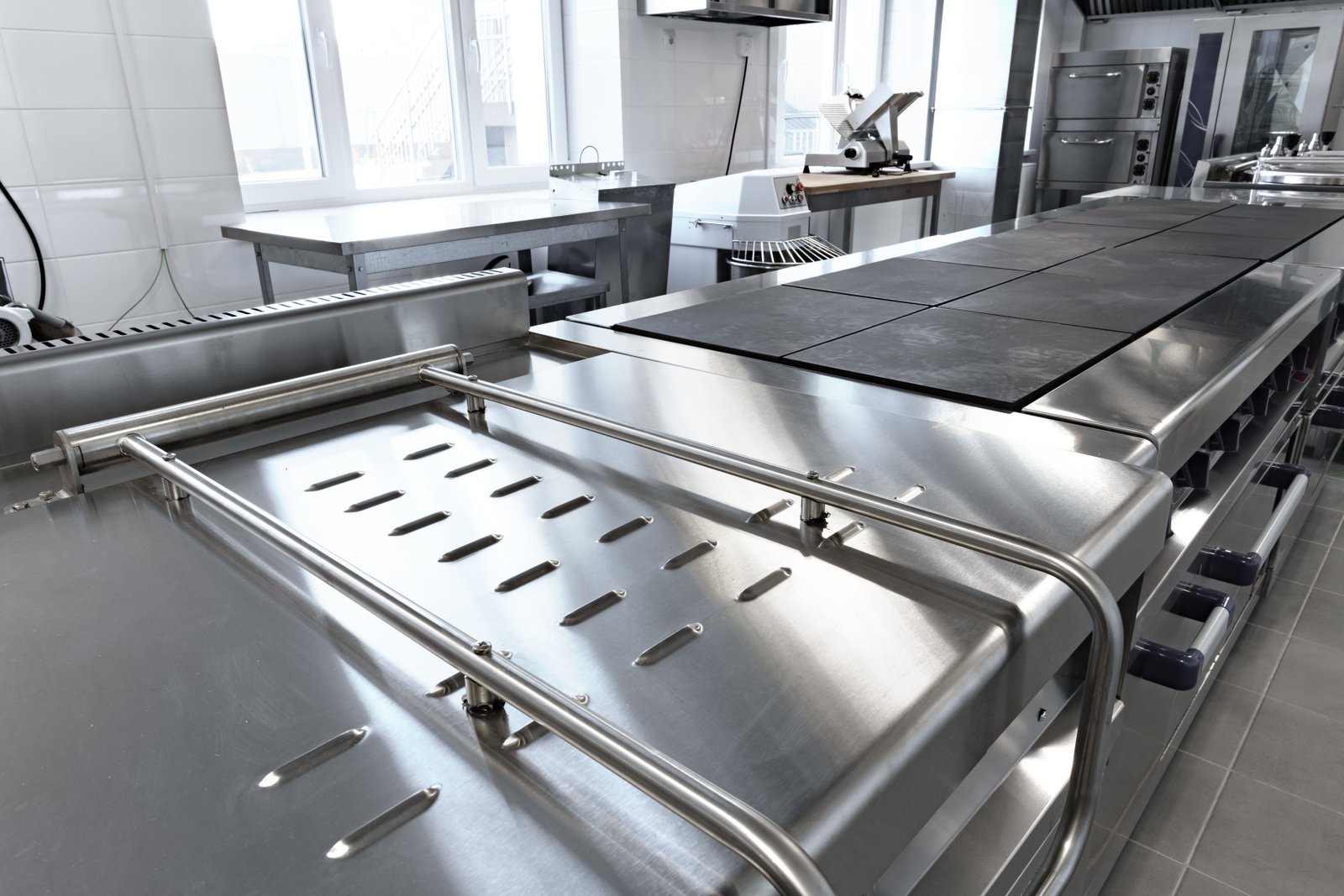
The implications of this case extend far beyond the food equipment industry. I have seen similar transformations in sectors like automotive components, architectural metalwork, and electronics enclosures. For instance, a client in the automotive sector manufacturing chassis components was facing similar issues of warping and inconsistent cuts, leading to poor fit-up in their robotic welding cells. The switch to laser-ready sheets not only accelerated their cutting process but also dramatically improved the consistency of their welded assemblies, reducing weld-related defects by over 60%. The lesson is universal: whenever precision and speed are critical, the quality of the raw material input6 becomes a primary driver of efficiency and profitability. Critically analyzing the entire value stream, rather than isolated cost centers, is the key to unlocking these profound improvements.
Lesson 1: Re-evaluate "Cost" as Total Cost of Ownership (TCO)
The most crucial lesson is to shift the financial perspective from upfront price to Total Cost of Ownership. The OEM in our case study paid a slight premium for laser-ready sheets, but this was dwarfed by savings from reduced scrap, lower labor costs for post-processing, decreased consumption of consumables like cutting gas and nozzles, and higher machine uptime.
A comprehensive TCO analysis reveals the "hidden" costs associated with using a standard material. These include the cost of machine downtime, the labor hours spent on rework and manual finishing, the value of scrapped material, and the opportunity cost of lost production capacity. When these factors are quantified, the seemingly cheaper material is often revealed to be the more expensive option overall.
Other OEMs should implement activity-based costing models to accurately track these expenses. By doing so, they can make data-driven decisions on material sourcing that optimize for overall profitability, not just the initial purchase price. This financial discipline separates industry leaders from the rest.
Lesson 2: Your Raw Material is a Component of Your Machine
The second key takeaway is to view the stainless steel sheet not as a passive commodity but as an integral component of the laser cutting system. Advanced manufacturing equipment is designed to operate within tight parameters, and its performance is directly dependent on the quality and consistency of the inputs.
Feeding a high-performance laser cutter with a variable, non-optimized material is like fueling a sports car with low-grade gasoline; it will run, but it will never achieve its full potential. The imperfections in the material force operators to constantly compensate, effectively de-tuning the machine and negating the benefits of the technology.
This lesson encourages a more collaborative approach between engineering, procurement, and operations. Material selection should be a strategic decision based on performance requirements, not just a procurement task focused on cost. OEMs should engage with material suppliers like MFY who understand the application and can provide materials engineered for optimal performance in that context.
Lesson 3: Unlocking Latent Capacity Drives Growth
The final lesson is that optimizing your primary processes can unlock significant latent production capacity without any new capital expenditure. The EU OEM increased their effective output by over 30% simply by changing their steel. This is a game-changing realization for any manufacturer operating at or near their perceived capacity.
This unlocked capacity provides immense strategic flexibility. It allows a company to take on more orders, reduce lead times, and be more responsive to customer demands. In a competitive market, this agility can be a more powerful differentiator than price. It enables business growth using existing assets more efficiently.
Other OEMs should analyze their production bottlenecks. If a primary process like cutting is being held back by material-related issues, it represents a major opportunity. Solving this bottleneck can have a cascading positive effect throughout the entire operation, improving flow, reducing work-in-progress inventory, and accelerating time-to-market.
Process-specific materials reduce TCOTrue
Laser-ready sheets may cost more upfront but significantly reduce hidden costs like scrap and downtime.
Steel is just a passive commodityFalse
Steel properties actively influence manufacturing outcomes, making it a critical process component.
What recommendations can be made for other companies considering laser-ready stainless steel sheets?
Considering a switch but unsure where to start? My primary recommendation is to begin with a controlled trial on a specific product line. This allows you to quantify the benefits within your own operational environment. Don't let inertia prevent you from exploring a change that could redefine your productivity. Partner with a supplier who can provide technical support and data to help you through this process.
Companies should conduct a pilot program to compare laser-ready sheets against their current material. It is crucial to measure key metrics like cutting speed, uptime, scrap rate, and post-processing time to build a data-driven business case for a full-scale transition.
For any company that relies on laser cutting stainless steel7, the decision to explore laser-ready sheets should be a strategic priority. However, making the transition effectively requires a thoughtful and methodical approach. The first step is to move beyond anecdotal evidence of production issues and begin a process of systematic data collection. Before you even trial a new material, you must have a clear, quantitative baseline of your current performance. How many minutes of downtime are you actually experiencing per shift due to nozzle cleaning? What is your true scrap rate on nested sheets? How many labor hours are dedicated to deburring and finishing laser-cut parts? Without this baseline data, it is impossible to accurately measure the ROI of a new material and build a compelling business case for change.
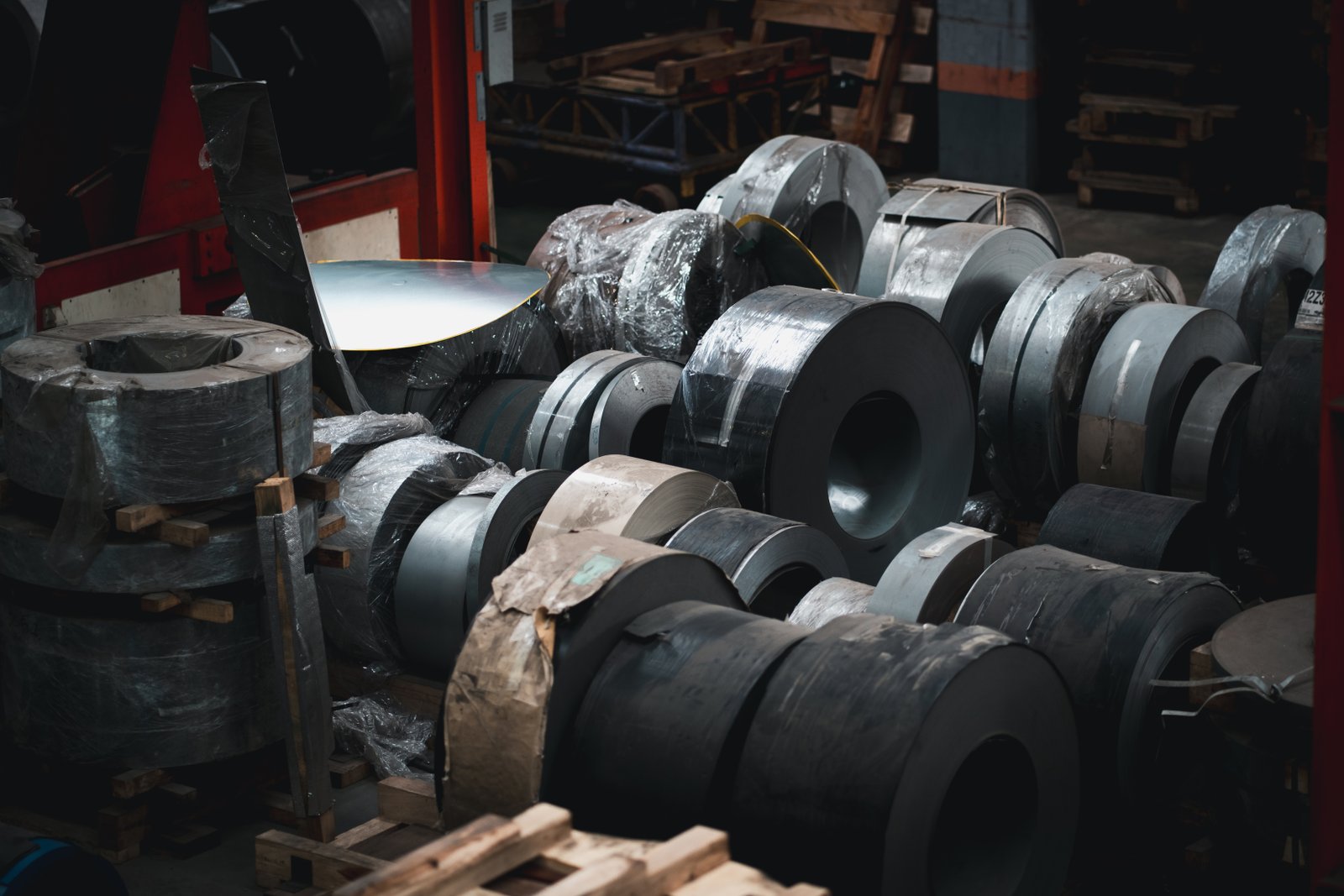
My advice is always to approach this as a scientific experiment rather than a simple material swap. Isolate the variables. Use the same part, the same nesting layout, and the same machine operator when you conduct a trial. This ensures that the only significant variable is the material itself. I also strongly recommend engaging your machine operators in this process. They are on the front lines and have an intuitive understanding of how different materials behave. Their qualitative feedback, when combined with quantitative data, provides a complete picture of the impact. At MFY, we often partner with our clients during these trials, providing not just the material but also our technical expertise to help them interpret the results and optimize their cutting parameters for the new sheets. This collaborative approach de-risks the transition and ensures that the client can realize the maximum possible benefit from day one.
Recommendation 1: Conduct a Comprehensive Audit and Baseline Analysis
Before engaging with a supplier, perform a thorough audit of your current laser cutting operations. Don't rely on assumptions. Use your machine's software, operator logs, and financial data to establish hard metrics. Key Performance Indicators (KPIs) to measure should include: average cutting speed, machine uptime/downtime (specifically code stoppages for cleaning), material scrap percentage, cost of consumables (lenses, nozzles, gas), and labor hours spent on post-processing per part or per shift.
This data creates a "before" snapshot and will be the foundation of your business case. A detailed baseline provides an objective measure of your current pain points and allows you to calculate a precise ROI when you trial the new material. For example, if you find that you are losing 90 minutes of production time per week to machine stoppages, you can assign a clear monetary value to that lost time based on your machine's hourly operating cost.
This audit should be a cross-functional effort involving operators, production managers, and finance. It ensures everyone understands the current state and is aligned on the goals for improvement. This internal alignment is critical for the success of any new material implementation project.
Recommendation 2: Partner with a Knowledgeable Supplier for a Pilot Program
Not all "laser-ready" materials are created equal. It's crucial to partner with a supplier who has deep technical expertise in both metallurgy and laser cutting applications. A good supplier acts as a consultant, not just a vendor. They should be able to discuss your specific application, the type of laser you use (fiber vs. CO2), and the thicknesses you cut most frequently to recommend the ideal product.
Structure a pilot program on a representative part or product line. Request trial material from the supplier—we at MFY are always happy to facilitate this. Run the trial under controlled conditions and measure the same KPIs you established in your baseline audit. This creates a direct "before and after" comparison. Document everything: changes in machine parameters, operator feedback, photos of edge quality, and, of course, the hard data on time and cost savings.
This pilot program de-risks the decision. It provides irrefutable evidence from your own production floor, making the decision to switch a logical, data-backed conclusion rather than a speculative leap. A successful pilot builds momentum and gets buy-in from the entire team.
Recommendation 3: Develop a Phased Implementation and Continuous Improvement Plan
Once a successful pilot has proven the benefits, don't feel pressured to switch your entire inventory overnight. Develop a phased implementation plan. Start with the parts or products that will benefit most—typically high-volume components or those requiring the highest quality finish. This allows your team to get comfortable with the new material and fine-tune processes.
Use the transition as an opportunity for continuous improvement. The gains you achieve are not a one-time event. With a stable and predictable material, your engineers and operators can begin to further optimize cutting programs, nesting layouts, and gas pressures to push performance even further. The initial 30% time saving is often just the beginning.
Establish a feedback loop with your supplier to discuss performance and explore new opportunities. The relationship should be a long-term partnership focused on ongoing optimization. By treating your material sourcing as a dynamic and strategic part of your operation, you ensure that you maintain your competitive edge for years to come.
Pilot programs reduce transition risksTrue
Controlled trials allow companies to measure actual performance improvements before full implementation.
All laser-ready sheets perform equallyFalse
Material performance varies significantly based on metallurgy and supplier expertise.
Conclusion
Ultimately, this case proves that a strategic investment in high-quality, process-specific stainless steel is not an expense but a powerful driver of profitability. By focusing on Total Cost of Ownership, OEMs can unlock hidden capacity, improve quality, and build a more resilient, competitive operation.
-
Learn strategies for improving complex manufacturing processes. ↩
-
Understand how specification gaps affect manufacturing outcomes. ↩
-
Learn how flatness impacts laser cutting efficiency and speed. ↩
-
Understand how chemical composition affects laser cutting performance. ↩
-
Learn about cost savings from reduced laser operation time. ↩
-
Explore how raw material quality affects manufacturing efficiency and final product quality. ↩
-
Discover the benefits of laser cutting stainless steel for precision and efficiency. ↩
Have Questions or Need More Information?
Get in touch with us for personalized assistance and expert advice.

